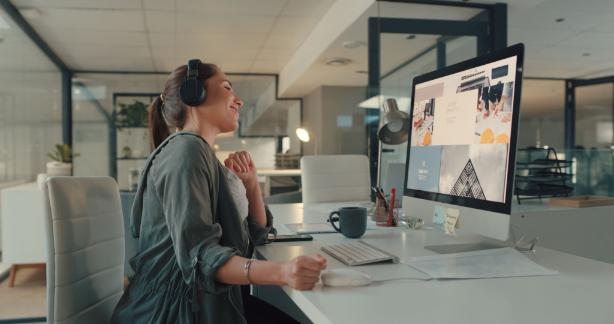What is Material Design?
Google’s Material Design is a design language tailored to the Android platform, emphasising cue-rich features and natural motions that mimic the real world to enhance on-screen touch experiences. With the help of 3D effects, realistic lighting, and animation features, designers create immersive, platform-consistent GUIs that provide the best possible user experience.
Material Design – Why Users trust “Realer” Interfaces
Google’s Material Design, originally known as “Quantum Paper,” a novel “ink and pen” approach, debuted in the middle of 2014. The goal of Material Design is to provide high-quality output that is consistent across platforms and gives users control over well-documented, aesthetically pleasing components that mimic the behaviour of physical objects. In contrast to the skeuomorphic depiction of culturally significant items (such as wastebaskets), designers employing Material Design apply fundamental, natural laws from the physical world, primarily pertaining to lighting and motion. By emulating the real world as closely as possible in terms of layout, visual language, and pattern library, we hope to lessen the mental strain placed on our users. The “card” concept in Material Design is a way to organise content and animations in multiple layers, and it also allows for a more individualised user interface (e.g., showing followers on Twitter).
When it comes to Material Design, it’s crucial that components behave as expected by users. It helps establish realism, for instance, if on-screen objects don’t defy gravity.
“Magical” and “Predictable” – an Indispensable Paradox
To successfully implement Material Design, you must be familiar with its guiding principles:
- It’s a material metaphor, you know.
- So, you take the idea of touchable reality and:.
- Create affordances that users will recognise and use. Real-world elements, such as buttons, should be used whenever possible to help users understand what to do right away. It’s up to the surfaces and the seams/edges to provide additional clues. Make use of realistic lighting and shadows to delineate areas and highlight moving components.
- Make use of an adaptive layout; this will help you maintain a consistent hierarchy, colour scheme, icon set, and space ratio across all devices.
- Bold, graphic and well-chosen elements add meaning and are pleasing to the eye
- Make designs stand out so that people can easily identify hierarchy and apply their own understanding of what it means. Superb use of colour and white space, potent use of imagery, and generous use of typography all over the screen contribute to a convincing sense of immersion.
- Create surfaces and icons that serve as cues to users, encouraging them to take action.
- Send signals through motion.
- User agency is increased when the effects of their actions are made manifest.
- Integrate animations into a single setting or stage, where they can play out in a smooth, uninterrupted sequence.
- Make sure your responses are distinct, but understated; no abrupt or erratic motions.
It’s crucial to strike a balance between bold, deliberate design choices and subtlety in regards to their natural reactions to user input. When a user drops a selected item into a group of objects, for instance, the other objects in the group should shift to make room for the dropped item. In Material Design, we avoid having inanimate objects perform vanishing or teleporting tricks. Instead, we adapt the familiar, constrained physical world for the expansive screens at our disposal. The infinite scrolling of YouTube is a prime example of this.
Material Design, Redesigned
In May 2018, Google released a revised version to remedy a major problem – the original guidelines were restrictive, emphasising function over style. Many app developers felt that their work would all look the same if they followed Material Design’s guidelines. Google had to strike a balance between uniformity and variety in Material Design so that designers would have room to tailor it to specific brands. Both the guidelines and the accompanying toolkit (which includes, among other things, updated icon packs and a Material Theme editor) have been updated for version 2. Therefore, you can fine-tune aesthetics to suit your organization’s brand presence while you build on the foundation of timeless natural laws.


